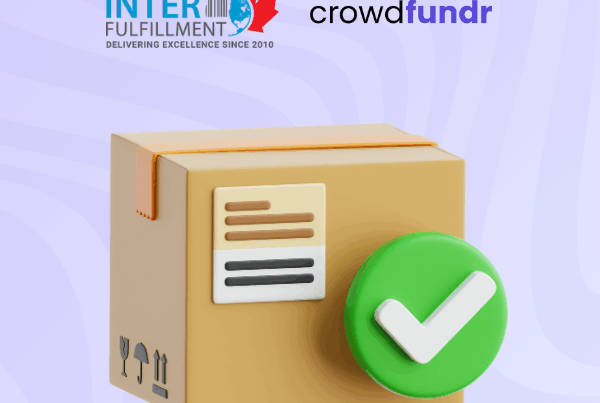Looking to give Crowdfundr a shot? This toolkit contains everything you need to understand the differences between Crowdfundr vs Kickstarter and how to seamlessly switch over to our platform.
Crowdfundr vs Kickstarter – not sure whether to switch?
The most notable difference between Kickstarter and Crowdfundr is the audiences.
Kickstarter runs an algorithm that pulls top-performing campaigns and highlights them to their audiences. It’s a common misconception that all you have to do is create a campaign on Kickstarter and they will automatically plop it in front of a group of people ready and waiting to back you.
However, in order to reach that point, you still need to do the work to create a phenomenal campaign and actively promote it while engaging your own audience. Only then will you rank high on their algorithm.
Crowdfundr provides options to make crowdfunding more affordable than Kickstarter.
If you believe your campaign is likely to rank high on Kickstarter and the funds you raise there will make up for the savings in crowdfunding fees, then Kickstarter may be the most sage option.
If you prefer more customizability, transparency, variability in reward options, and nearly-free crowdfunding to bring your creation to those who will love it, read on for how to switch to Crowdfundr!
BONUS: Our Kickstarter vs Crowdfundr comparison guide will help you further understand the differences between platforms. Click here to jump there!
Before you begin
- Everyone receives a user profile to create their personal biography on. Pictures, videos, links, etc. can all be included. If you have a brand separate from your personal identity, however, or if you run an indie publishing/printing company, you can open a Crowdfundr Professional account, too (for free). You’ll receive the option to create the organization account in the campaign creation flow.
If you are using Crowdfundr Professional and want to customize the platform theme to your brand, here are the useful items to have ready:- Logo in PNG format
- Brand colour RGB or Hex codes
- Font names (or similar Google font alternative)
- Desired navigation links (About page, Contact, social links, etc.)
- Copyright message
Then contact Crowdfundr to get your organization Verified! This is FREE and allows for more imported contacts, changing rewards even after they’ve been claimed, and more!
- Obtain a Stripe and/or PayPal business account if you haven’t already. Note: you CAN create your organization profile and campaign without adding an account yet; you just can’t launch them until you do. But if you do not have one or both of these, it’s a good idea to get the process started as soon as you can. Both Stripe and PayPal are recommended (if available in your region), as these provide your supporters with options upon checkout.
- Choose your campaign type: all-or-nothing or keep-it-all. This is one of the few things you cannot change once your campaign template is created. Kickstarter runs solely all-or-nothing campaigns, and most readers will likely choose that type. However, some might have a reason to start a keep-it-all campaign instead. This article helps explain the differences.
- Choose a pricing model. Crowdfundr has three options to choose from, but you can change your mind whenever you want – even when the campaign is live. This article will help with understanding the differences between the models.
Pre-launch
Crowdfundr does not have a pre-launch page – because your campaign is viewable even before launch! While it won’t yet be searchable, anyone with the campaign link can view it and subscribe to notifications so that they know right when it launches!
- Once your campaign is set up (see next section), retrieve your campaign link and share it with current and potential supporters.
- Ask supporters to subscribe to the campaign to be notified when it goes live!
General campaign set-up
- Go to crowdfundr.com/create and set up your first campaign template, plus a user profile and, if applicable, an organization profile. Information in your Kickstarter Biography can go in your user profile!
- Crowdfundr does not have subtitles available – condense your title into 80 characters. We recommend something specific that includes your project/character name and what kind of project it is (book, music, statue, etc…).
- Your project image becomes your campaign cover photo. However, you can have as many images in your media gallery as you like and run them in a slideshow too. There is the option to upload a separate thumbnail image when necessary. This article will tell you more about the media gallery.
- Your project video is also entered in the media gallery. You can set it as the cover video, and the media gallery will place a Play button on your cover photo to play it.
- Remember, your goal does NOT have to include shipping! Your goal can be changed anytime with a keep-it-all campaign and anytime before launching an all-or-nothing campaign.
- No target launch date is required. You launch your campaign whenever you like! Resources in our Creator Hub are always available to you.
- Customize your campaign link!
Rewards
- Take pictures of each reward item! Individual rewards have spaces to upload your work.
- Rewards aren’t set up in the campaign creation flow. After your template is done, click ‘Edit’ in the sidebar menu, then ‘Rewards’ to set up each one.
What you have as ‘items’ on Kickstarter can be individual rewards on Crowdfundr. You can choose to bundle together as you wish – you’d just create a bundle as one reward – but as Crowdfundr lets supporters claim more than one reward, there are no reward ‘tiers.’ - Rather than creating add-on items to reduce the shipping costs of multiple items, you will just enter an add-on shipping cost to any individual rewards requiring it. This article explains how add-on (and single shipping) costs work.
- There are more options than you’re used to! Explore everything in the menu and check out our guide on creating rewards.
Shipping & Fulfillment
- View Crowdfundr’s pledge management and distribution/fulfillment partners on our Partners page.
- Decide when to collect shipping: on the campaign itself or afterwards with a fulfillment manager.
If on the campaign itself: enter which countries and prices/add-on shipping prices into each reward (as described in the last section). Rewards will say ‘+ shipping’ after the price.
If afterwards with a fulfillment manager: make sure to include this into your story somewhere obvious! Perhaps in big, bold lettering… because your supporters will want lots of notice if they’ll be charged extra later on for shipping. - Crowdfundr will automatically collect shipping addresses (as well as names and emails) whenever a reward is claimed, and supporters’ information will always be available to you under the campaign’s Transactions tab. If there is any further information you need, set it up in your Data Collection menu.
Story writing
Story writing isn’t too different between platforms; your story is your story! Crowdfundr does provide some extra options to what you’re used to, designed to enhance your campaign’s visual appeal, communicate effectively while not inundating your supporters with information, and provide multiple options to enhance with media.
- Copy and paste your story (or write a new one if you’re so inclined!)
- Enter your risks and challenges (if applicable) right in the story.
- Features new to you:
- Font colour options
- Two extra story tabs for additional information (FAQ, Risks & Challenges, creator/org info, etc.)
- Videos must be uploaded via YouTube or Vimeo (in the story; direct uploading is available in the media gallery)
- In-campaign link generation
- Anchor links
- Columns for easy picture sizing and organizing information
- Font colour options
Two useful resources for story writing:
- Editing the Campaign Story – a technical how-to guide on Crowdfundr’s storytelling capabilities;
- Storytelling for crowdfunding campaigns – for those creators needing an idea or two for an effective story to sell their project.
Promotion prep
- Download your backer information from Kickstarter if you can, then upload it onto your new campaign’s Contact list. Once you launch, everyone uploaded to this list is notified.
If you cannot download backer information from Kickstarter, post an update on that campaign with information and links to your new Crowdfundr campaign.
- Invite your campaign team to the campaign. They can not only help edit and plan your campaign, but they come with a crowd! Ensure they know all of the campaign-sharing capabilities. This article is great to send to your team members.
Receiving your funds
Crowdfundr does not hold funds. When you choose to charge your supporters (or every time a transaction is made in a keep-it-all campaign), funds go directly to your Stripe and/or PayPal account (depending on the transaction and your account, this could take anywhere from a few seconds to a couple days). Any applicable fees are automatically deducted from contributions, so you won’t owe Crowdfundr, Stripe, or PayPal anything further.
Then, you just transfer funds to the desired bank account! We often get asked how often these transfers should be done; it doesn’t really matter. However, for easy bookkeeping later on, at least once a week is recommended.
Any concerns regarding receiving funds must be discussed with Stripe or PayPal. Crowdfundr does not have the ability to view or modify these accounts, nor can we contact Stripe or PayPal on your behalf.
Crowdfundr vs Kickstarter Comparison Guide
There’s only one Earth! Consider the environment before printing this guide.
We’re here to help!
Our Discord channel is a place to connect with other creators and the Crowdfundr team to ask questions, seek advice, and share strategies. But if you don’t do Discord, or want to schedule a demo, feel free to email us at





